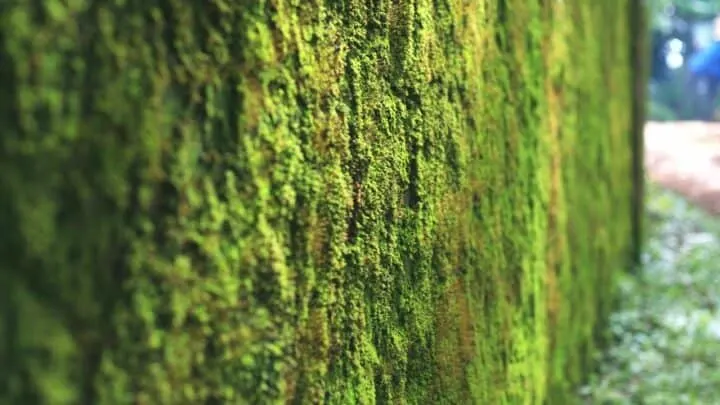How to make a living moss wall. Living moss walls have a striking appearance. As a backdrop on Zoom calls, they instantly make an impression.
So much of an impression that it has become trendy to have green walls indoors.
The University of Stuttgart in Germany states that mosses have a surface area that is 30 larger compared to other plants.
Most are not real living moss walls, though. A true living moss wall is far too expensive for regular indoor use.
Living moss walls are straightforward to assemble but only suitable in a garden or outdoor space.
If you have the space, read on to learn how to grow a living moss wall.
We get commissions for purchases made through links in this post.
Table of Contents
How to make a living moss wall
Use real moss to make a living moss wall. Living moss walls are great for outdoor display. Grow moss indoors first to let the rhizoids anchor onto the accessories you want to include. Pebbles, rocks, driftwood, twigs, etc. Glue the accessories onto plywood, then fill spaces with moss or other plants.

Things to know before building a living moss wall
Indoor moss walls are not living moss. Those are preserved moss or may contain some living moss in them. It will not all be alive.
Moss is preserved by coating it with glycerin to prevent it from losing its color.
Indoor displays are made of preserved moss or a mixture of preserved and living moss. The alternative would require a complex irrigation system.
Living moss holds up to ten times its weight in moisture. That is heavy. Heavy enough to do some serious structural damage to interior walls.
Living moss walls are for exteriors. Like attaching to brick walls or the walls of a raised garden bed. Outside, away from your property.
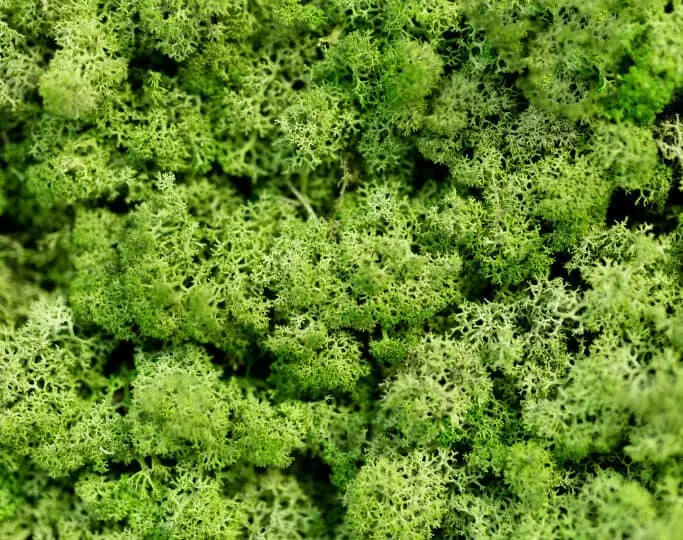
Make a DIY Moss Wall – Building (or buying) the frame
Living moss will anchor onto anything solid. Rocks, driftwood, or the simplest – plywood from pallets.
If you want to grow plants in soil surrounded by moss, grow the moss on cinder blocks. Potted plants or soil can be put in the holes.
Moss shoots up from a cluster of rhizoids. It does not grow roots. That is why it will anchor (and grow) on almost any solid base.
The type of frame you use will depend on what you plant with the moss.
For small plants, a range of air plants can be planted on the moss, just like a vertical garden, only with flowers.
For something larger, consider mounting a staghorn fern (Bifurcatum Platycerium), which needs to attach to sphagnum moss to stay hydrated.
The living moss anchors to the wood or rocks to soak moisture, keeping the staghorn fern plant alive and growing.

Outdoor moss wall
The types of plants you choose to grow and your garden climate will influence what you plant, or at least the frame you need for the wall.
Living moss walls in the garden will thrive year-round. Moss is extremely cold-hardy. It will lose color when temperatures drop below 20 Fahrenheit (-6 degrees Celsius) but will bounce back when the heat and water return.
The same cannot be said about many other plants.
Tropical plants will need removable parts on the frame to be brought indoors for overwintering.
For tropical flowering plants, consider using multiple frames, i.e., hang boards from boards.
The simplest living wall frames are flat boards.
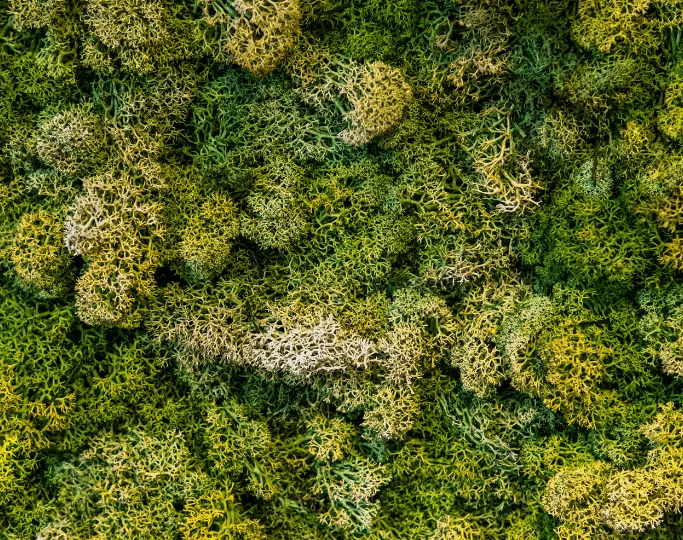
Materials to include in a living moss wall project
Texture can be added by gluing driftwood, twigs, and branches to create a 3D living moss wall.
Glue some rocks onto the board for growing Acrocarpus mosses – upright growers. Those are great for filling in spaces.
For plants, the types and sizes will influence the frame kit you buy or build.
Plants for living moss walls
Some plants suited to growing on living moss walls include:
- The string of hearts (Ceropegia Woodii – a vining succulent)
- Golden pothos (Epipremnum aureum – a vining plant that can be trained to climb on a living moss wall)
- Bromeliads and tillandsia are air plants that can be planted on wood attached to moss.
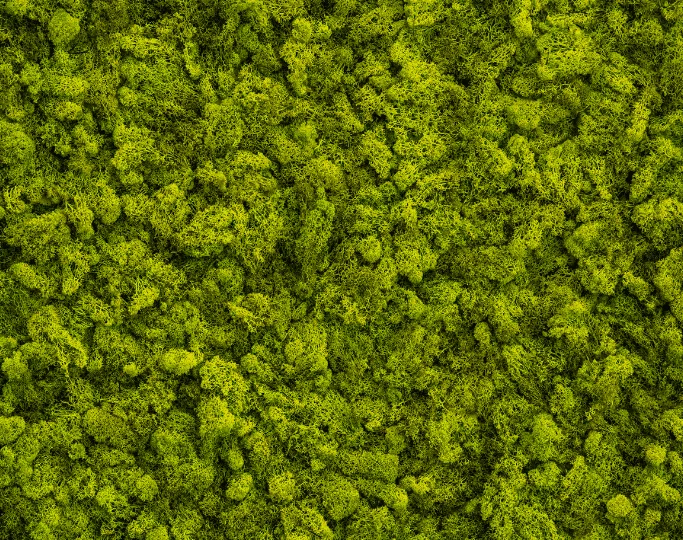
Have a look at orange succulents, blue succulents, or any slow-growing hanging plants for low-light environments that can be hung from hooks attached to the frame.
As living moss walls are displayed outdoors, select cold-hardy plants.
Testing plants is part of the fun
As succulents are so easy to propagate, you can grow these indoors, then solve some mysteries like can succulents survive the cold? They can be refrigerated to see if they go dormant or die.
Then you’ll know if you can plant them on a year-round living moss wall or if they need to be replaced every spring if they are not cold-hardy succulents.
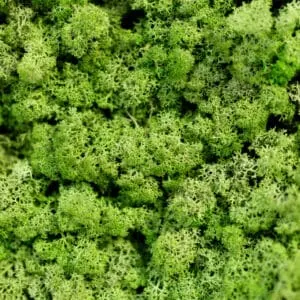
Decide on the types of moss to grow
Living moss walls are rarely just one species. Where is the beauty in that?
There are thousands of moss species, and you can mix and match them.
A mixture creates different textures, shades of green, and multiple sizes of leaves.
Acrocarpus moss grows upright like grass blades, but it looks more like ferns up close.
Pleurocarpous moss is the carpet moss that becomes the background covering, blanketing the plywood base with a green ground cover.
Moss selection and growth
No matter the type of moss you want to include on a living moss wall, it is best to learn how to grow it indoors first because that is the fastest way to grow it.
They all need the same moist conditions with only a little sunlight to grow.
One transparent cup, tub, or empty clear glass jar or bottle can grow moss.
Containers with lids create the same micro-climate that growers use to grow moss in a terrarium, but it is done on a smaller scale with bottles, jars, and plastic tubs.
The living moss wall is a grand project that will use various moss types, sizes, and tears from sheet moss and clumping mosses in different sizes. Grow the moss indoors, build the frame, piece it together, and display it outdoors.
Assembling the pieces
With your moss ready, the plants selected, and accessories decided on, then comes to time to piece everything together on the frame.
Start creating a 3D structure on the plywood by accessorizing it with rocks, pebbles, stones, and driftwood.
These become the anchors for the moss to attach to. Moss can be started on wood or stones, then glued to the plywood.
For attaching plants, air plants can be attached to wood or stones with a hot glue gun. They get their nutrients from the air and do not need to grow into moss.
For plants that grow roots attached to a living moss wall, bore holes in the wood to tie some nylon fishing line through. (Skip this if using a cinder block frame. Those have spaces to put in plant containers).
Sphagnum moss can be wrapped around a plant’s root ball and tied onto the frame.
Be sure that the wire that ties a plant to a living moss wall is not twine, rope, or some other material that will decompose or weaken with water.
Living moss walls are constantly wet. Use non-degradable wire so rooted plants can be removed for either watering or overwintering indoors.
Hanging the frame
Once you have the living moss wall assembled, it can be displayed anywhere that gets at least a couple of hours of sunlight daily.
As it retains a lot of moisture, it must be misted frequently.
The high moisture content from a living moss wall is why they are not suited to hanging indoors. It would contribute to mold problems. At worst, the weight could lead to structural problems, especially if it wasn’t anchored onto beams.
Related: Growing moss on concrete
Frequently Asked Questions related to building a living moss wall
What is the difference between living moss and preserved moss?
Living moss is a living plant. It needs caring for the same as any plant. Preserved moss is for decoration only. It will not grow. As such, it does not need watering. That is why it gets used for indoor moss walls. Living moss walls indoors will need a complex irrigation system and drainage.
How often do living moss walls need to be watered?
Living moss walls must be misted with rainwater twice weekly in warmer weather. In the winter, if there is one inch of rainfall per week, it will keep the moss alive. Any other plants grown on the moss wall may need shelter from the rain or be removed and replaced the following spring.
I love the moss wall I built myself at home. There is nothing better than living moss on your wall. If you don’t have the time or skills to build your own, there are many options to choose from.

Daniel has been a plant enthusiast for over 20 years. He owns hundreds of houseplants and prepares for the chili growing seasons yearly with great anticipation. His favorite plants are plant species in the Araceae family, such as Monstera, Philodendron, and Anthurium. He also loves gardening and is growing hot peppers, tomatoes, and many more vegetables.
Last update on 2025-01-23 / Affiliate links / Images from Amazon Product Advertising API

